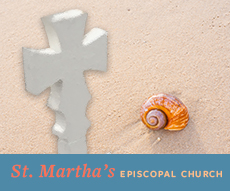
07 May Spring Cannot Be Canceled
In November 2018, the painting, Portrait of an Artist, sold at auction in New York for $90 million. At the time, it was the highest sum paid for a work of art by a living artist. The artist in question, David Hockney, is alive and well at the age of 83, and his passion for creating art remains undimmed.
He is the subject of a recent book entitled, Spring Cannot Be Cancelled, which records Hockney in conversation with his friend, the art critic Martin Gayford. In 2019 Hockney moved to France, where he has a studio. He arrived in time to paint the arrival of spring; when Covid-19 began its grim march throughout the world, he decided to stay put. The enforced isolation proved to be blessing, as the painter, working without distractions, applied himself to producing beautiful and child-like paintings of the surrounding Normandy countryside.
The book is partly a diary of that time, filled with pictures, musings and anecdotes. He remarked, “I’m sympathetic to anyone who’s locked down on the twentieth floor. In a New York high-rise, it wouldn’t be so good. But if you are in the right place, the lockdown has its pleasures. Here, it’s just ravishing.”
My acquaintance with the art of Hockney came from a priest I knew who actually owned an original painting: one of the Los Angeles pool paintings. In 2012, a major exhibition of Hockney’s works was held at the Royal Academy in London. It was called A Bigger Picture, and it included the largest painting I have ever seen: Bigger Trees Near Warter, which measured 40 feet by 15 feet. Encountering this picture itself was astonishing, but even more so was the fact that the exhibition, which basically comprised pictures of trees, proved to be the most popular art event of the year.
At the time I wrote an enthusiastic “inspiration” for our church magazine, describing my own experience in viewing these paintings. (Sadly, the article wasn’t published due to lack of space.) With the passing of time, I have grown to admire the paintings more. Like Picasso in his old age, Hockney’s current work has a child-like quality: the technique is simplified, the colors brighter. A child looks at the world with wonder, and sees things afresh every day. This child-like wonder explains, I think, why Hockney still has a passion to paint the world around him.
A walk in the Brandywine Creek State Park last week inspired me with that same sense of wonder, as the late afternoon sun cut through the trees to light upon the rocks and trees beside the path. There is no greater artist than God, I said to myself, and praised God for his creation. Human art can render the same scene, albeit in a different way, which in itself is a cause for celebration. Hockney’s art celebrates the natural world and at the same time makes new what is familiar: the hawthorn blossoms, the shades of cut grass, the contrasting color of a barn roof.
Seeing the glory in the world around us, whether through our own eyes, or through the eye of the painter, can lift our jaded spirits. This is the world in which human beings have a place and purpose. Like an artist, we can cultivate a vision which celebrates our world and each other. As each person is created and loved by God, our relationships can be built on the foundation of mutual respect and wonder in one another.
Learning to appreciate and value the intrinsic worth of each human being is actually what makes us human. Our teacher is Jesus Christ: in every place Jesus visited, he showed a special love and care for each person. When we celebrate the joy of creation, we remember him, whose example illuminates our own place in creation, and who opens our eyes to see a world transformed by the love of God.
Father David




No Comments